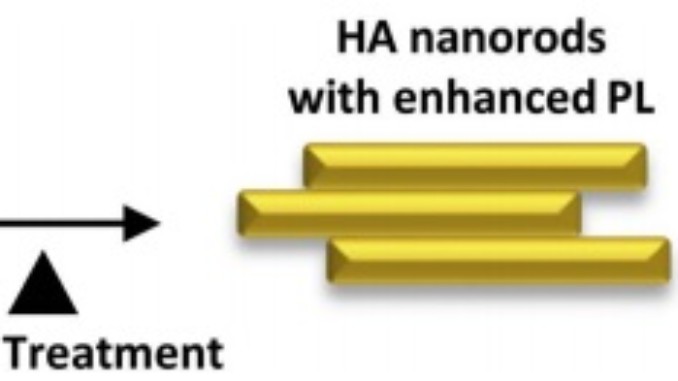
A novel approach to obtain highly intense self-activated photoluminescence emissions in hydroxyapatite nanoparticles
Abstract: Defect-related photoluminescence (PL) in materials have attracted interest for applications including near ultraviolet (NUV) excitable light-emitting diodes and in biomedical field. In this paper, hydroxyapatite Ca10(PO4)6(OH)2] nanorods with intense PL bands (bluish- and yellowish-white emissions) were obtained when excited under NUV radiation at room temperature. These nanoparticles were synthesized via chemical precipitation at 90 °C followed by distinct heat treatments temperatures (200–800 °C). Intense and broad emission profiles were achieved at 350 °C (380–750 nm) and 400 °C (380–800 nm). UV–Vis spectroscopy revealed band gap energies (5.58–5.78 eV) higher than the excitation energies (~3.54 and ~2.98 eV at 350 and 415 nm, respectively), confirming the contribution of defect energy levels within the forbidden zone for PL emissions. The structural features were characterized by X-ray diffraction, Rietveld refinement, thermogravimetric analysis, and Fourier transform infrared spectroscopy. By means of these techniques, the relation between structural order-disorder induced by defects, chemical reactions at both lattice and surface of the materials as well as the PL, without activator centers, was discussed in details.
Writers: Thales R. Machado, Júlio C. Sczancoski, Héctor Beltrán-Mir, Içamira C. Nogueira, Máximo S. Li, Juan Andrés, Eloisa Cordoncillo, Elson Longo
Journal of Solid State Chemistry
Volume: 249 Pages: 64-69 Published: 2017
Keywords: Hydroxyapatite; Chemical precipitation; Photoluminescence; Electronic structure; Defects; Order-disorder
DOI: 10.1016/j.jssc.2016.12.018




